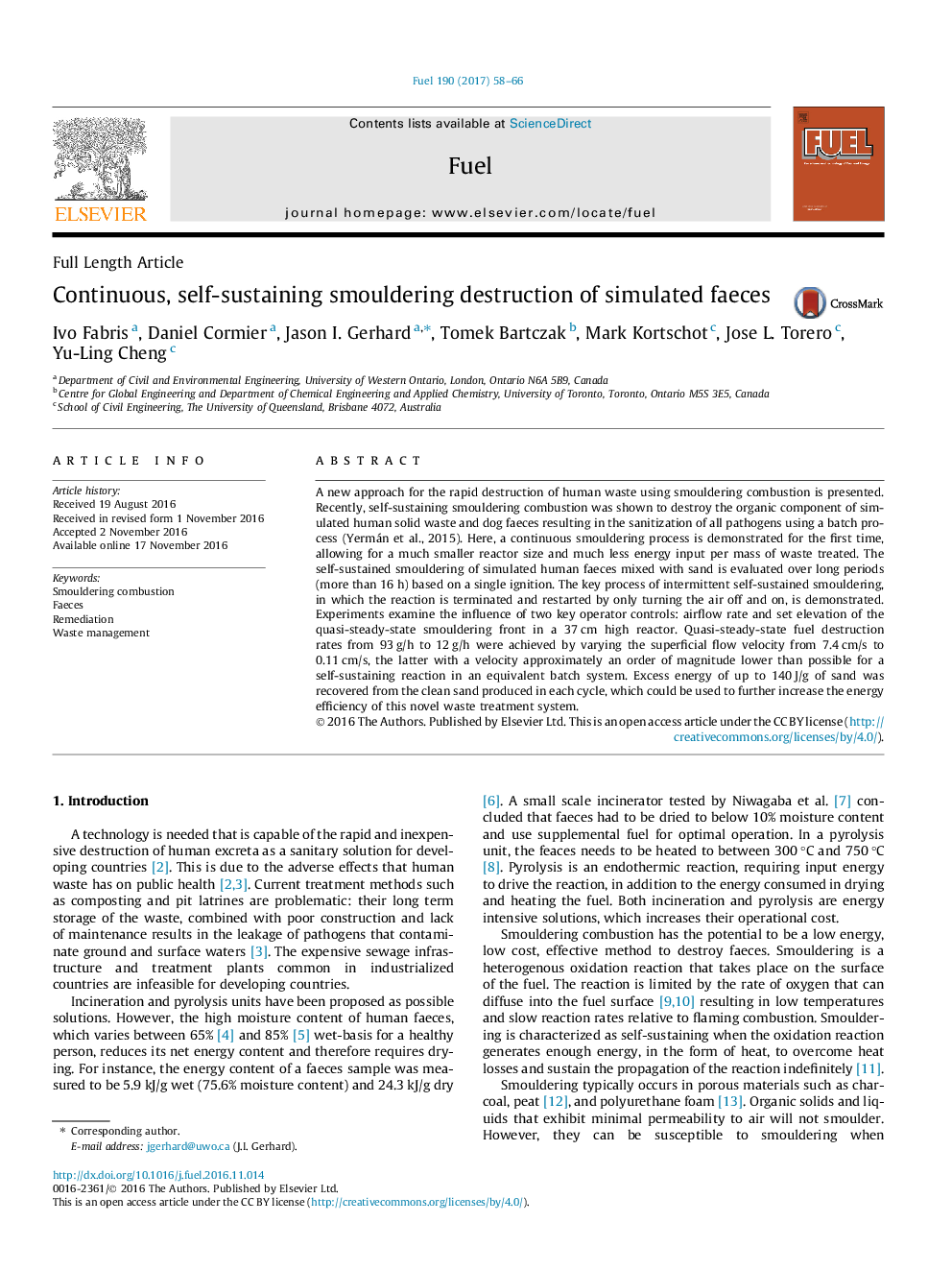| Article ID | Journal | Published Year | Pages | File Type |
|---|---|---|---|---|
| 6475542 | Fuel | 2017 | 9 Pages |
A new approach for the rapid destruction of human waste using smouldering combustion is presented. Recently, self-sustaining smouldering combustion was shown to destroy the organic component of simulated human solid waste and dog faeces resulting in the sanitization of all pathogens using a batch process (Yermán et al., 2015). Here, a continuous smouldering process is demonstrated for the first time, allowing for a much smaller reactor size and much less energy input per mass of waste treated. The self-sustained smouldering of simulated human faeces mixed with sand is evaluated over long periods (more than 16Â h) based on a single ignition. The key process of intermittent self-sustained smouldering, in which the reaction is terminated and restarted by only turning the air off and on, is demonstrated. Experiments examine the influence of two key operator controls: airflow rate and set elevation of the quasi-steady-state smouldering front in a 37Â cm high reactor. Quasi-steady-state fuel destruction rates from 93Â g/h to 12Â g/h were achieved by varying the superficial flow velocity from 7.4Â cm/s to 0.11Â cm/s, the latter with a velocity approximately an order of magnitude lower than possible for a self-sustaining reaction in an equivalent batch system. Excess energy of up to 140Â J/g of sand was recovered from the clean sand produced in each cycle, which could be used to further increase the energy efficiency of this novel waste treatment system.
